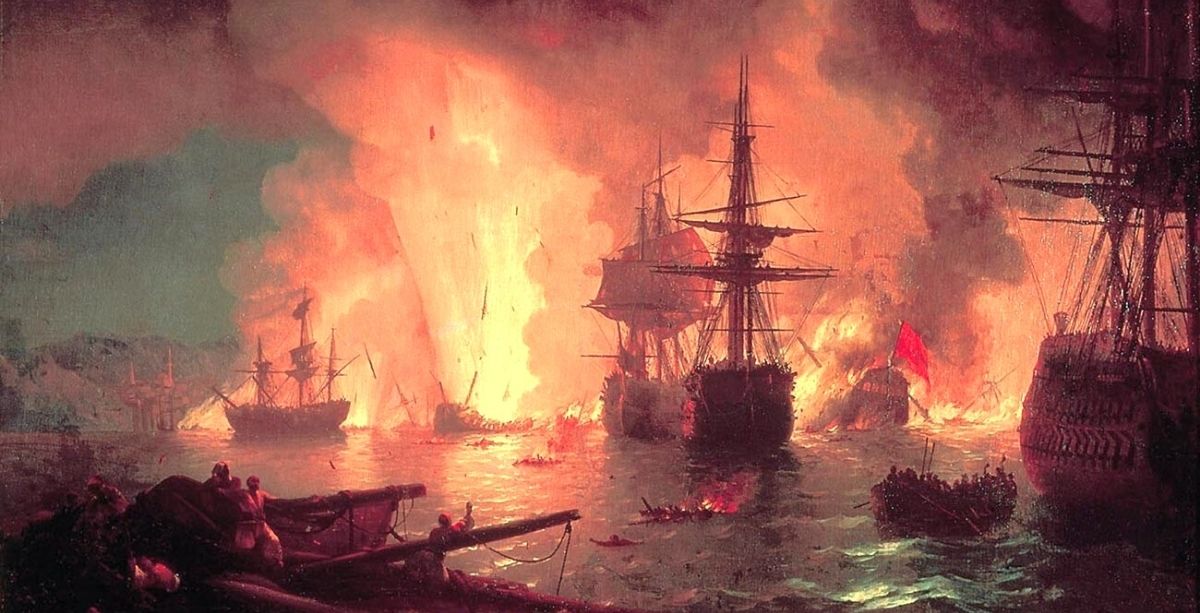The late 18th century witnessed major confrontations between the Ottoman Empire and the Russian Empire, during which Russian troops set foot in Beirut for the first time in centuries.
Opportunity for Rebellion
Between 1768 and 1774, the Russians and the Ottomans fought for land in a war that encompassed eastern Europe, the Caucasus, and the Middle East.
Seeing that the Ottoman Empire was preoccupied with the war, Ali Bey Al-Kabir, Egypt’s autonomous ruler at the time, decided to declare his country’s independence and sent an army to occupy Ottoman territory in the Levant.
By that time, the Ottoman Empire had suffered one of the most pivotal losses in the war, in Chesme Bay on the Empire’s Aegean coast, where 20 ships and 11,000 sailors were lost in the fighting, according to Russia Beyond.
The chain of uprisings that erupted soon after posed an additional challenge for the struggling Ottoman Empire.
The rebellions got much more difficult to control after the Russian Empire took advantage of the situation and began to support them.

Russia Beyond/Vifilius Eriksen
On June 11th, 1772, aided by the Russians, the rebels defeated Ottoman forces in Sidon.
Following the victory, Palestinian leader Sheikh Zahir Al-Umar Al-Zaydani, who had led the fight in Sidon, convinced the Russians to march toward the strategic city of Beirut, which was under the rule of Mount Lebanon Emir Yusuf Shihab at the time.
Later in June, Russia-backed Greek rebels directed their artillery fire at Beirut and proceeded to bombard it for five consecutive days before disembarking and looting the surrounding areas.
The Taking of Beirut
Following the attack, Emir Yusuf sent an envoy to negotiate with the head of the invading Greek squadron, headed by Major Gregorios Rizo. He ended up paying a contribution to the Greek rebels and pledging allegiance to the Russian Empire.
The news was followed by a swift move by Ottoman commander Ahmad Pasha Al-Jazzar, who took Beirut without facing resistance and began to fortify the coastal city, which held great strategic significance to the Ottomans because it served as a vital supply line that fed Damascus — one of their most important cities.
On July 23rd, 1773, a Russian fleet of 17 ships initiated a siege on Beirut while Emir Yusuf’s troops completed the siege on land.
However, the Lebanese troops were gradually withdrawing from the campaign as more time went by, which strained the Russian forces.

Wikipedia/Thomas Aldridge
Nonetheless, the Russians kept the siege in force until September 29th when Ahmad Pasha raised the white flag, especially after incoming Ottoman reinforcements were attacked and scattered by Sheikh Zahir.
Emir Yusuf took control of the city after paying the Russians nearly eight tons of gold in compensation for Russian losses, in line with a previous agreement.
Russian ships remained in the Mediterranean until July 21st, 1774 when the Russo-Turkish War ended with the signing of the Kuchuk-Kainarji Peace Treaty.
Half a century later, Greek revolutionaries landed in Beirut on a mission to liberate it from Ottoman rule during the Greek War of Independence.

















